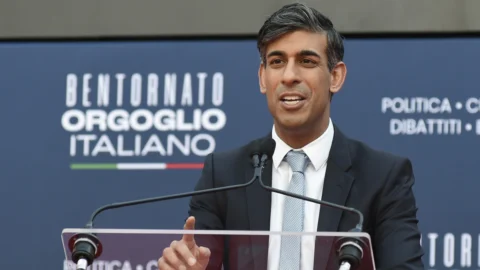The "randomness" of a bestseller
Building a bestselling book is something that would have intrigued Cagliostro. In fact, the matter pertains more to alchemy than to logic, natural talent or big data. Goldman Sachs analysts, who are able to predict the trend of a material commodity like the consumption of matches in Finland or Peru with the accuracy of a sniper, raise the white flag when called upon to forecast the trend of a film, a book or any cultural or entertainment product. The behavior of consumers of goods of this type is not predictable. The only possible forecasts, often blatantly wrong like those of the growth of ebooks, are of the macro-quantitative type; for example, the worldwide CAGR of the cinema industry in the five-year period 2016-2021 will be 3%. Beyond it is difficult to go.
The one thing that is known for sure, which ultimately forms the bedrock of the publishing industry, is that an author who has written one bestseller will almost certainly be able to write a second, a third, and so on. The consumer's loyalty to a cultural product that he has highly appreciated is superior to any other commercial loyalty. So finding potential bestselling writers is the industry's biggest challenge and the foundation of a healthy and lasting business. How has this challenge been addressed so far?
In search of the bestseller: an act of genius
There really were alchemists at the origins of modern publishing. They were the great figures of intellectual-publishers who, being also endowed with a strong entrepreneurial spirit and a strong appetite for risk, sniffed out the right subject and manuscript and managed to make it a bestseller, transforming the lucky writer into one of their family. It would be enough to go and see how Giangiacomo Feltrinelli in 1957 transformed a mimeograph into Doctor Zhivago, one of the most successful books in world publishing. The following year, its author Boris Pasternak was awarded the Nobel Prize. But rummaging through samizdat and smuggling them into Indiana Jones isn't the only way to create success stories.
There is also the "Calasso method" which with its Adelphi has gone to research and occupy, like a visionary real estate developer, an unexplored border territory completely outside the mainstream in vogue, but with enormous potential for development in the medium-long term ; potential at the moment visible only to some original, dreamy and even mystical intellectual. The “Calasso version” can be broadly equated to the doctrine of disruptive innovation which is the gospel of every crazy start-up founder. But to do this you have to be good, geniuses like Steve Jobs was. And Calasso is. Unfortunately most of us don't have the same talent.
In the era of the mass media, the heirs of the great founding intellectuals have sold their publishing houses to the gigantic media conglomerates. Thus from a master-divinatory-paternalistic approach to the bestseller we have moved on to a purely managerial and commercial one. The intuition for more modern marketing and quantitative market analysis techniques has been lost: Excel sheets have taken the place of pats on the back and Christmas diaries. The authors appreciated more and more the amount written on the advance check rather than the esteem and friendship of the publisher. But we haven't seen a big difference: over 70% of published books do not break even and it is still the white whales of a few enumerable stocks on the fingers of one hand that keep the business going and distribute dividends to hungry shareholders. results.
How could it be with new media and still isn't
With new media the bestselling puzzle seemed to finally have reached a near-solution point thanks to big data. Big data can truly be the decisive lever provided you know how to use them. Being data of dimensions that are difficult to imagine and collected with espionage methods, it is necessary to know how to refine, interpret, finalize and convert them into decisions. Netflix and Amazon, by tracing the navigation of their customers, know practically everything about their purchasing and consumption behavior. It's a good starting point, so excellent that the late David Carr felt like writing, a few weeks before leaving us, that the search for the bestseller was over because Netflix would have served it to us with a data analysis algorithm. But that's not exactly what's happening. On the contrary.
Netflix produced House of Cards (which nobody in Hollywood and New York wanted) for the visionary intuition of its chief content officer Ted Sarandos. It was a colossal success also thanks to the idea of "binge vision" (all the episodes of a season immediately available for viewing). Then there was the award-winning Orange Is the New Black… and then came Marco Polo's faux pas, an ambitious $90 million production. But how did big data suggest a drama set in 95th century China with a 2015% Asian cast when Netflix's audience at the time was only Western? Netflix can take comfort in watching Disney. In 150 Disney, which knows its target very well, produced a film like Tomorrowland that did not even recover the costs and required an additional investment of XNUMX million dollars in marketing.
Amazon's publishing arm, Amazon publishing, is certainly not publishing full-blown bestsellers, indeed we rarely see it in the latter's classics.
It takes time to find the bestseller formula and in the meantime alchemy continues to be the approach that works best. Until now.
The bestseller code
Now Matthew L. Jockers – director of the Literary Lab at the University of Nebraska at Lincoln – and Jodie Archer – PhD at Stanford and experience at Apple – both experts in computational linguistics, have described in a book entitled The Bestseller Code: Anatomy of the Blockbuster Novel the formula for packing a bestseller. The book will be released in September 2016 with the Macmillan Group's St. Martin's Press. Cost of the hardacover $17,56, cost of the KIndle ebook $19, two dollars more (that's why the ebook market of medium-large publishers falls like a dry branch). Too bad that happens!
"Publisher Weekly" published a succinct review of the book and immediately a debate started which saw the intervention of many industry experts including Mike Shatzin. The point is: can it really be an algorithm based on a quantitative textual analysis that provides us with the bestseller formula?
Dave Eggers circle, that's the model
Before answering this question, let us try to understand the authors' thesis for what can be deduced from the first essential anticipations of the book. The circle by Dave Eggers (translated into Italian by Mondadori) is the paradigmatic example of the novel that can reach the top of the bestseller classics. According to the results of the two authors' algorithm, The circle has all the literary elements of the bestseller; 100% compliance. Eggers, write the two authors, "is the paradigmatic writer of the last 30 years". And here the algorithm really guessed us, because The Circle has long been on the New York Times bestseller list, selling 80 hardcover copies and 140 paperback copies according to Bookscan.
The two authors analyzed 20 novels of all genres using computational linguistics techniques. The Jockers-Archer algorithm examines the plot, characters and themes and then determines the first ingredient of the formula: the correct mix of plot, characters and themes to have the greatest impact on the reader's expectations.
The second ingredient of the formula is the symmetry of the plot which must develop over a structure of at most 3 acts. All the bestsellers of the last 30 years share the same rhythmic pace of the plot.
The third and final ingredient concerns the style of writing: it must be written in everyday language. There must be absolute coherence between the character of the characters and the verbs that the writer uses to describe their actions.
According to this book, the secret of a bestseller is contained in its content. In the presentation form of the book on Amazon it is written that thanks to textual analysis it is possible to establish 97% whether a manuscript will or will not be a bestseller.
A thesis that has made those who think that it is more the factors external to the content than the content itself that make a bestseller jump out of their seats.
Is it really all in the content? It's not in the audience
It is certainly not computational linguistics that serves us a bestseller, but marketing. This was the first reaction to the book's theses by Mike Shatzkin, one of the brightest and most listened to insiders in the world of new publishing. On his blog he wrote “My team is unanimous. The argument that a book becomes a bestseller with text content analysis without considering market research, branding, or marketing is ludicrous."
That of the two authors of Bestseller Code, ie the thesis that the computational analysis of the text is one of the determining factors for the success of a book, is not completely new. The totalizing approach of the authors of the book is new. Two start-ups, BookLamp, acquired by Apple, and Trajectory have developed tools to obtain the frequency of use of words, the structure of sentences, the dominant themes and other indications to direct the work from the computational analysis of the text of the SEO and of the entire marketing team of the publisher. Thanks to this analysis, which BookLamp calls the "BookDNA" (the project is called the Book Genome Project), it is possible to measure the complexity of the content, estimate the level required for the reader to understand it and also the reference age. Not a bad start.
In this case, textual analysis is thought of as an indispensable support for the marketing action whose primary objective is to make the title known to the reference audience. If the audience doesn't come in contact with the content, a potential bestseller content will never become a market bestseller.
According to Shatzkin, more than the content, audience research is the turning point. The content itself provides a low rate of predictability regarding its commercial success. The buyer that the publisher is looking for does not know the book and this reader can "wake up" by leveraging the interests and searches that this reader will be able to carry out to clarify those interests. For example, the expression “Civil Rights” never appears in the Dark Beyond the Hedge, which is instead the expression most sought after by readers who are interested in this topic.
New tools for the new publishing
In reality, as Neil Balthaser, founder of Intellogo and book industry veteran, writes, the textual analysis of the books that reach the "New York Times" bestseller list serves to understand the reading preferences of the audience and therefore direct the choices publisher's investment. Balthaser writes: “In a digital future, the use of automated text analysis platforms can provide the publisher with real-time information about its customers, identify what works and what does not work in the market and, perhaps, build a bestseller through an accurate picture of what the reader wants and not simply through what comes spontaneously to the publisher… This kind of informed decision has been partially possible until now and often publishers have published blindly in the hope of meeting a target audience willing to buy their books.”
In this digital future, the work of the publisher will be increasingly data-centric and rather than being an editor, they will have to fill their offices with developers, accountants and linguists who will have to analyze the content of published books, manuscripts and above all identify reader trends.
The problem, however, as a study by the Pew Research Center informs us, is that book readers are decreasing and therefore, even more than in the analysis of the existing ones, all book publishing players will have to invest in product innovation to capture a clientele who is changing their tastes and fleeing to Pokemon GO which is truly at the junction of fiction and reality, as a book can never be.





